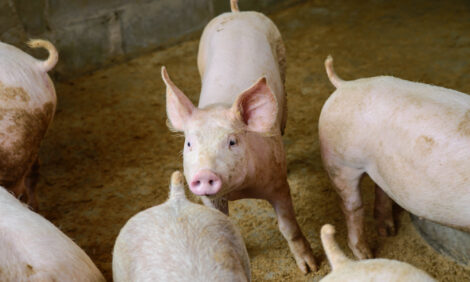



Combating ergot alkaloid contamination in pig production
After a French farrow-to-finish farm reported unusually high piglet mortality and issues with sows’ lactation, researchers identified contamination from ergot alkaloids, a type of mycotoxin, as the culprit.A recent case study published in Porcine Health Management has linked ergot alkaloid poisoning in pig feed with sudden and excessive piglet mortality 24-48 hours after birth. The poisoning also caused sows to lose their appetite and become agalactic (lose their milk).
In this case study, the researchers observed that sows exposed to 3.49mg ergot alkaloid/kg feed for 10-15 days before farrowing and 8.06mg ergot alkaloid/kg feed over 3 to 4 days at the beginning of lactation led to agalactia in 13 of 20 sows in a batch. This level of exposure also led to high neonatal mortality in all the litters at the site.
Mycotoxins in feed
Small-scale pig producers sometimes use wheat and rye as bulking agents in self-prepared pig feed. Though the grains can make the feed go further, producers need to take steps to keep mycotoxins like ergot at bay. Ergot is a parasitic fungus that impacts wheat and rye and can cause severe vasoconstriction, disrupt production and impair growth in mammals. Though ergot toxicity is rare, the side-effects can cause widespread mortalities and economic losses.
Though there are maximum permitted levels of ergot in un-ground cereals, research suggests that the legal limits should be re-evaluated. Jurisdictions outside the EU have lower permitted levels and there are fewer reported outbreaks of ergot alkaloid toxicity in those regions.
The study results
A French farrow-to-finish farm with 160 sows recorded a spike in neonatal piglet mortality (79 percent piglets dying 24-48 hours after birth). The sows on-farm didn’t appear to be thriving either – most of them had lost their appetite and half of them were abnormally passive when they were disturbed. Around 2/3 of them had developed agalactia after farrowing. When observed, many of the sows were laying ventrally, so piglets couldn’t access their udders. Other maternal behaviours were suppressed as well.
The necropsied piglets had empty stomachs and intestines, but mucosa levels were normal. This indicates that there weren’t any underlying medical conditions contributing to the piglets’ deaths.
Initial examinations showed no noticeable issues in the breeding or farrowing rooms. Researchers took samples of the self-prepared pig feed. They paid particular attention to the ground wheat that was added to the feed, suspecting mycotoxin contamination may have played a role in the piglet deaths and agalactia.
Mass spectrometry and liquid chromatography confirmed the presence of ergot alkaloids in the feed. Researchers recommended removing the wheat from the diets and provide milk replacer or creep feed to the remaining piglets. They also suggested increasing the room temperature so the piglets would be more comfortable. In order to treat the sows, the researchers administered sorbitol to stimulate their appetite, and added clay (at 2 percent concentrations) to animal feed over the following weeks to help alleviate ergot bodies.
These steps appeared to resolve the mortality and agalactia issues by the next batch of farrowings.








